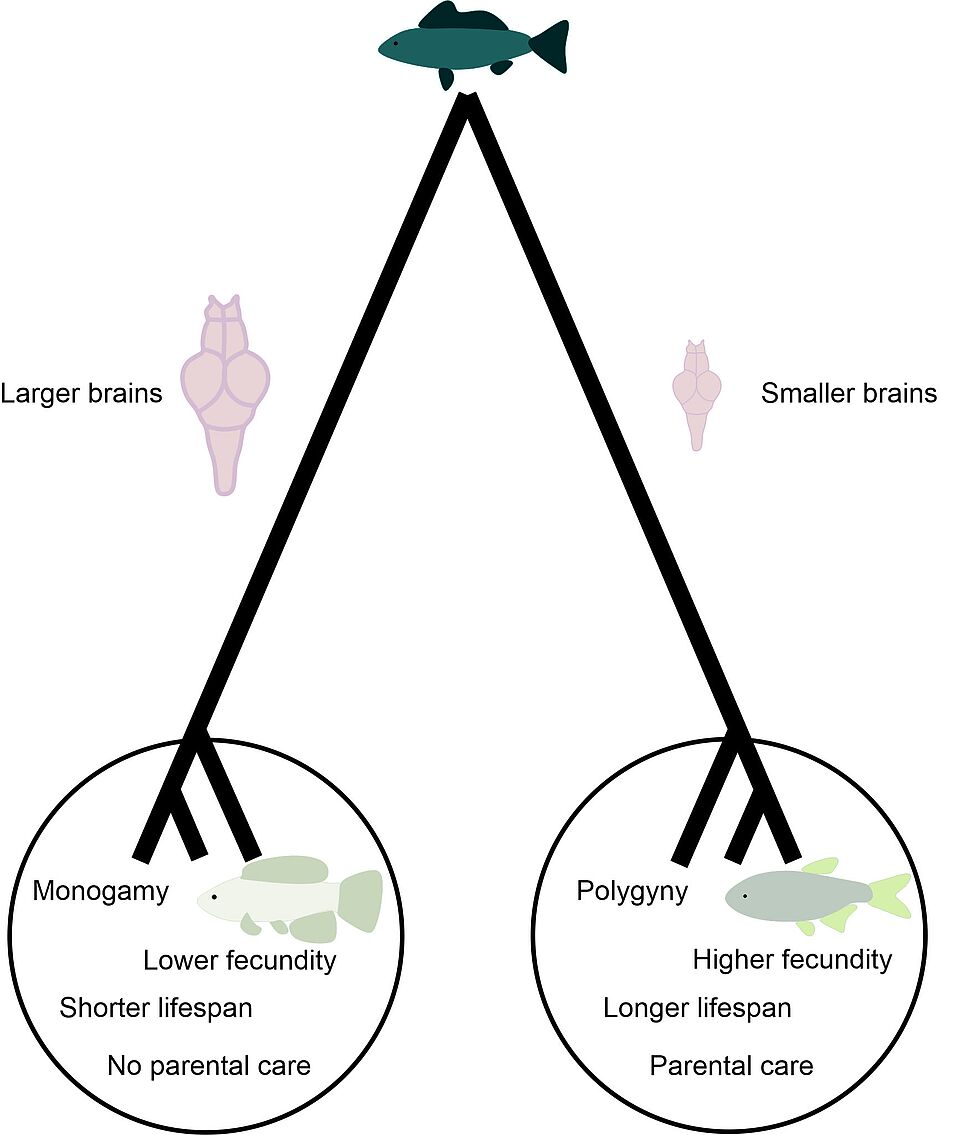Abstract
The astonishing diversity of brain sizes observed across the animal kingdom is typically explained in the context of trade-offs: the benefits of a larger brain, such as enhanced cognitive ability, are balanced against potential costs, such as increased energetic demands. Several hypotheses have been formulated in this framework, placing different emphasis on ecological, behavioural, or physiological aspects of trade-offs in brain size evolution. Within this body of work, there exists considerable taxonomic bias towards studies of birds and mammals, leaving some uncertainty about the generality of the respective arguments. Here, we test three of the most prominent such hypotheses, the ‘expensive tissue’, ‘social brain’ and ‘cognitive buffer’ hypotheses, in a large dataset of fishes, derived from a publicly available resource (FishBase). In accordance with predictions from the ‘expensive tissue’ and the ‘social brain’ hypothesis, larger brains co-occur with reduced fecundity and increased sociality in at least some Classes of fish. Contrary to expectations, however, lifespan is reduced in large-brained fishes, and there is a tendency for species that perform parental care to have smaller brains. As such, it appears that some potential costs (reduced fecundity) and benefits (increased sociality) of large brains are near universal to vertebrates, whereas others have more lineage-specific effects. We discuss our findings in the context of fundamental differences between the classically studied birds and mammals and the fishes we analyse here, namely divergent patterns of growth, parenting and neurogenesis. As such, our work highlights the need for a taxonomically diverse approach to any fundamental question in evolutionary biology.
Fischer, S., & Jungwirth, A. (2022). The costs and benefits of larger brains in fishes. Journal of Evolutionary Biology, 1-13. https://doi.org/10.1111/jeb.14026

